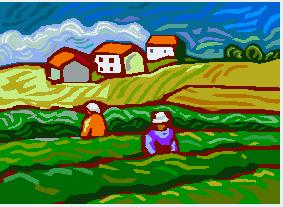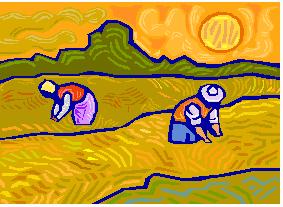Tuesday, September 13, 2005

I’m of two minds. Please read one of the following:
Business decision-makers, read this
I’m going to show you a simpler, more effective way for business organizations to connect with customers, increase revenue, contain costs, boost innovation, improve processes, reduce cycle time, and take advantage of the creativity of their people. Generally, you’ll be doing more with less, so this is not going to cost a lot of money out of pocket.
or…
Knowledge workers, read this
I’m going to show you ways to cut stress, stay abreast of change, make yourself heard, leverage your network, balance work and life, and be happier in whatever you do. People will find you more fun to work with and you will get more accomplished.
It’s all the same thing.
It doesn’t much matter which paragraph you read because they are the same story, told from two different perspectives.

Growing a business successfully requires the loyalty, dedication, and know-how of people who enjoy working hard at it. Enjoying one’s work requires fair treatment, a worthwhile goal, trust in your ability to get the job done, and an appropriate degree of challenge: the opportunity to be all that you can be.
All we gotta do is act naturally
Joe Jaworski is spot-on when he says, “Our mental model of the way the world works must shift from images of a clockwork, machine-like universe that is fixed and determined, to the model of a universe that is open, dynamic, interconnected, and full of living qualities.”
The key word here is “living.” For a while, I struggled with the concept of nature as the appropriate analogy for business organizations. My brother, who worked for the Environmental Protection Agency after a career teaching biology, set me straight. Nature is a self-contained system. A business enterprise is more like agriculture, which has a specific goal. You’ve got to get the fertilizer right to grow the hay; you need the hay to feed the cattle. Small farms follow natural cycles and constitute sustainable agriculture. Factory farms squeeze as much as they can out of the land, often depleting the soil or planting clone monocultures that are vulnerable to total wipe-out if attacked.
Adaptation to change
The world is changing fast. Learning is adaptation to change. Businesses that fail to clear the path of the obstacles of bureaucracy, hypocrisy, and irrelevant leftovers from times past will not be able to keep the pace.
We generally think of learning as something a person does; being “learner-centric” is all the rage in training departments. But this is only a piece of a much larger whole. It’s like the Italian tailor who had an audience with the Pope. “What’s he like?” asked his friends. The tailor replied, “He’s a 39 Regular.”
The responsible leader operates in a broader domain than that of learners. She must optimize the operation of an entire business ecosystem. Adaptation on this scale involves networks, physical layout, innovation, the diffusion of new ideas, bonds with customers, support systems, organizational agility, and other factors, many of which are not addressed by traditional organizational structure and are not assigned to any department’s budget.

‘Scuse me. It’s time to herd the cows into the barn, feed the chickens, bale the hay, and mend the fences over on the back 40.









0 Comments:
Post a Comment
<< Home